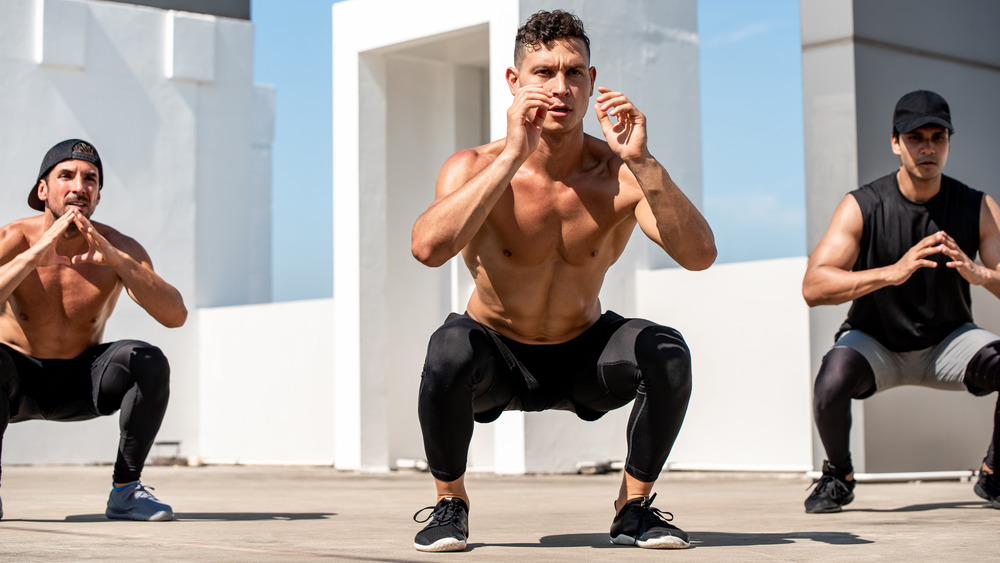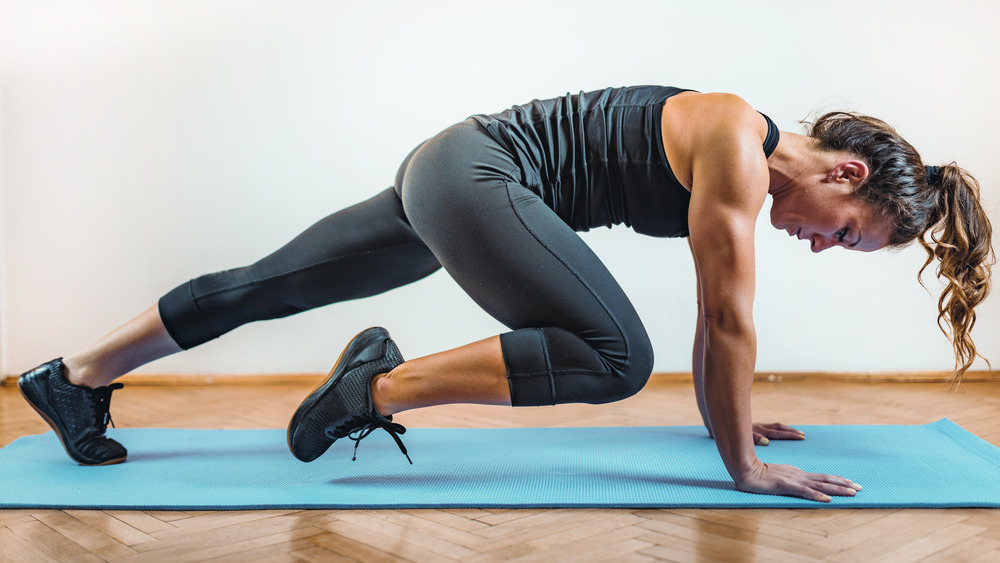What Is Tabata?
Got four minutes to spare? Good news: you can fit in a Tabata workout. You've likely heard that high-intensity interval training (HIIT) is a great way to speed up weight loss as well as make major gains in the gym in a minimal amount of time. And adding Tabata training to your HIIT routine might speed things up even more, while saving you time in the process. Tabata training, or simply Tabata, is done using a two-to-one ratio of hard and easy effort for a short duration (via Women's Health).
This style of HIIT was developed in Tokyo in 1996 by researcher Izumi Tabata, and has been popularized by bootcamp-type classes in the past few years. Tabata found in his research that between groups doing low, moderate or high-intensity exercise in this style, the group doing the short bursts of work had the best aerobic and anaerobic improvements after six weeks of training. Tabata training has become popular as a way to get through a workout efficiently even when you're in a time crunch, since even a four-minute burst with just a single exercise can have benefits (via Active).
What does Tabata training actually look like?
You'll do a set that lasts four minutes where you alternate between a single exercise like squatting, mountain climbers, or burpees at an all-out pace for 20 seconds, followed by 10 seconds of rest, repeated eight times. After one set is complete, take a full minute of rest before moving to another exercise, and repeat the process. You'll likely be ready to collapse in a puddle of sweat afterwards, but you'll also increase your anaerobic capacity while boosting your metabolism (via Active).
If you prefer focusing on cardio rather than more strength-based exercises, you can do Tabata-style intervals on an exercise bike or treadmill at the gym, or outside running or riding (via Men's Journal).
However, even if Tabata training sounds great for you, don't do it every single day — your body needs a break, so it's recommended that you only do a serious Tabata workout twice a week. You'll also want to use lighter weights for any strength-based exercise since the work will be intensified because of the speed at which you're doing your sets. And like any HIIT workout, a dynamic warm-up with some mobility work and light cardio is critical: Never jump into a Tabata set without doing a few minutes of movement first.


